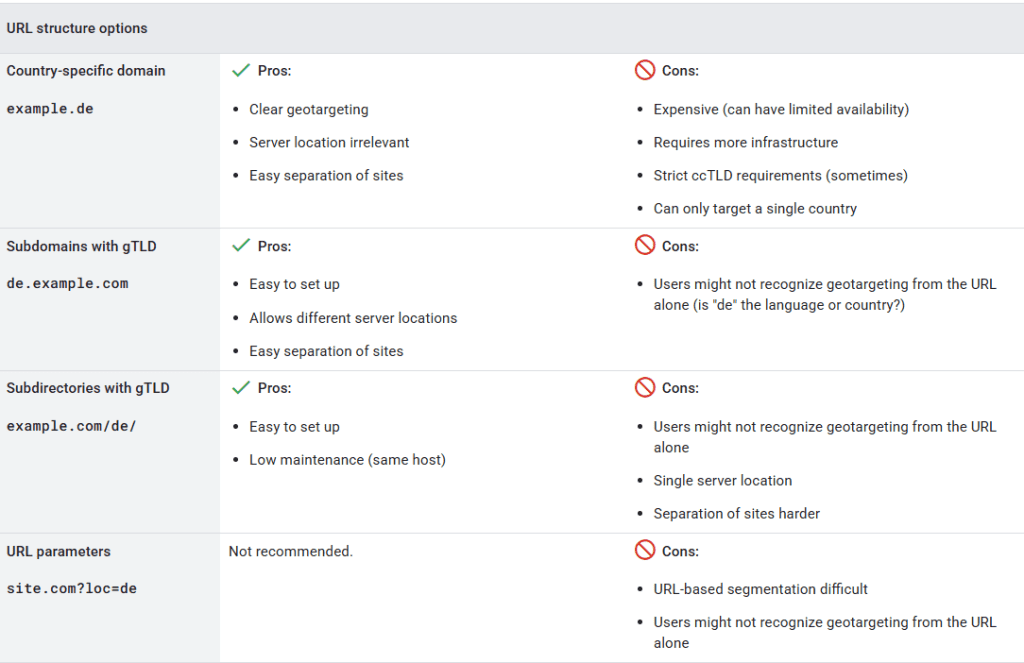- October 11, 2025



Replatforming is a big step. A fresh start, faster site, better UX, and all the integrations and backend improvements that allegedly make life easier. It is the kind of project that gets people focused on design, functionality, performance and the bigger picture. But if international expansion is part of the plan, SEO needs to be scoped properly from the start.
It is easy to assume a new platform will handle international SEO as expected. That assumption is where problems start. Some platforms force international storefronts onto subdomains. Others limit hreflang implementation or make internal linking between markets far more difficult than it should be. The result is international pages that struggle to rank, traffic that does not pick up, and businesses that end up working twice as hard to get visibility in new markets.
Every platform will claim it supports international SEO. The question is not if it can, but how it does. Some make language and regional targeting seamless. Others create unnecessary complexity that will hold things back later.
Expanding into new markets is not just about adding different language versions of a site. The platform needs to support the right structure, allow for scalable hreflang implementation, and keep everything connected in a way that search engines can process properly. A platform that makes this difficult is going to cause problems down the line.

Image Source: https://developers.google.com/search/docs/specialty/international/managing-multi-regional-sites
Some platforms push subdomains as the default for international storefronts. It sounds structured and logical at first. Different sites for different markets, everything neatly separated. But Google will see it differently.
A subdomain is treated as a separate site (you can thank parasite SEO for that). Some SEO value is shared between them, but not enough to avoid the extra effort required. Every subdomain has to build up its own authority, which slows things down. International visibility takes longer to establish, rankings fluctuate between markets, and the workload increases with every new expansion.
A subfolder structure keeps everything under one domain. Search engines treat the site as a single entity, which makes international SEO much smoother. Rankings settle faster, internal linking strengthens visibility across markets, and the effort put into SEO works harder across all regions.
For businesses that want to scale internationally without the added complexity, subfolders keep things efficient. A strong domain benefits all markets rather than splitting authority across multiple properties.
Using country-code domains for each market has its place, but it is not a quick win. Google sees them as strong local signals, but they require far more resources to make them work effectively.
Each ccTLD needs its own SEO strategy, link building, and local authority building. There is some shared SEO value, but every domain is still competing on its own. Without the right level of investment, they often underperform or require a far greater effort than businesses anticipate.
International SEO is not just about URL structure. Search engines need clear signals to understand which version of a page belongs to which audience. If hreflang and internal linking are not mapped out properly before migration, it can create issues that are difficult to fix later.
Some platforms automate hreflang, making it simple to manage as a site scales. Others require manual tagging, which quickly becomes unmanageable. Internal linking between country versions also plays a huge role. If search engines cannot easily understand the relationships between markets, it makes ranking the right page in the right country much harder.
Once a site is live on a new platform, making major structural changes is expensive and disruptive. The best time to get international SEO right is before migration, when decisions can still be made without undoing months of work.
Replatforming should make international expansion easier, not introduce new problems to solve. Taking the time to scope international SEO properly ensures that global growth happens without unnecessary setbacks. The goal is not just to launch into new markets, but to do it in a way that sets the site up for long-term success.
Comments: